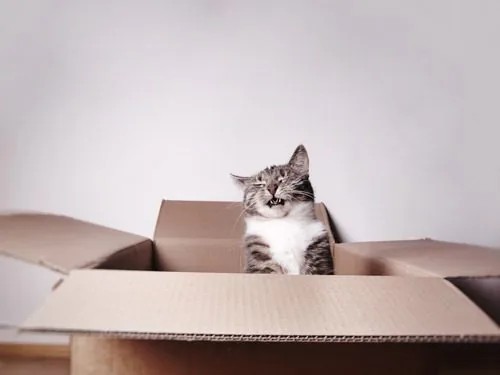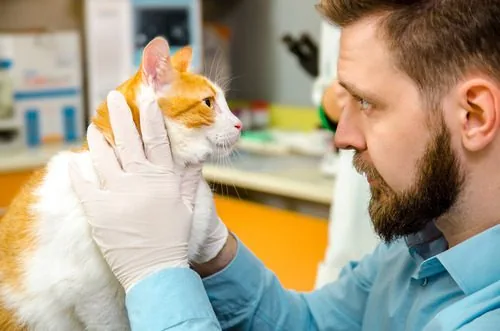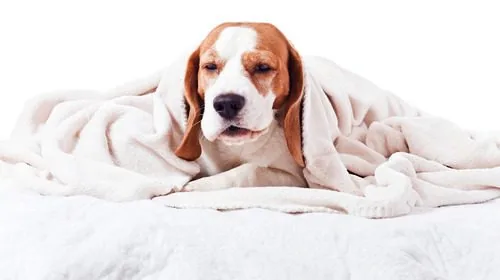Cat Butt Wiggle: Why Do Cats Shake Their Butt Before They Pounce
As a cat owner, you’ve likely noticed your feline friend shaking their butt before pouncing on a toy or even another pet. This adorable behavior, often referred to as the “cat butt wiggle,” is a fascinating aspect of feline body language that has left many cat owners curious about its purpose. In this article, we will dive into the reasons behind this distinctive behavior, its role in feline hunting and play, and how understanding the cat butt wiggle can help you better understand your cat’s instincts and needs.
The Science Behind the Cat Butt Wiggle
Muscle Preparation
One of the primary reasons cats wiggle their butt before pouncing is to prepare their muscles for the upcoming leap. This wiggling motion helps the cat to engage their hind leg muscles, stretching and contracting them in anticipation of the powerful burst of energy required to pounce. By warming up their muscles this way, cats can ensure a more efficient and accurate pounce.
Assessing Distance and Trajectory
The cat butt wiggle also allows the feline to gauge the distance and trajectory needed for a successful pounce. As they wiggle, cats use their keen sense of sight to determine the precise angle and force required to reach their target. This preparatory phase enables cats to calculate the most effective approach, increasing their chances of successfully capturing their prey or toy.
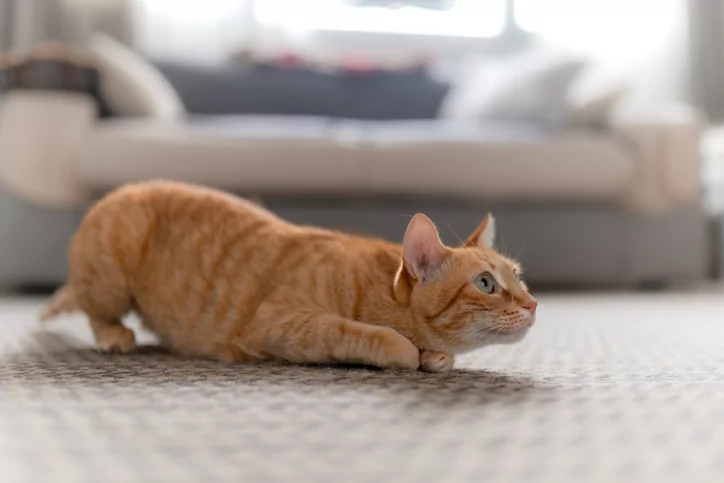
Building Tension and Balance
The wiggling motion helps cats build tension in their muscles and establish a stable balance before leaping. As they shift their weight from one side to the other, cats fine-tune their balance and center of gravity, ensuring they have a firm foundation from which to launch their attack.
A Connection to Hunting Instincts
The cat butt wiggle is directly linked to feline hunting instincts. Even domesticated cats, who may never have to hunt for their food, retain these innate predatory behaviors passed down from their wild ancestors. The wiggling motion helps cats to practice and refine their hunting skills, which would have been crucial for their survival in the wild.
Play and Socialization
Cats often engage in the butt wiggle when playing with toys, other cats, or even their human companions. Playtime is an essential aspect of feline socialization and helps cats develop their hunting skills, even if they don’t need to use them in a domestic setting. By understanding the role of the butt wiggle in your cat’s play and hunting behaviors, you can provide them with the appropriate toys and play opportunities to satisfy their instinctual needs.
Encouraging Healthy Play and Exercise
Providing your cat with a variety of toys and opportunities for play is vital to their overall health and well-being. Regular playtime can help prevent boredom, reduce stress, and promote a healthy weight.
Here are some tips to encourage your cat to engage in play and practice their butt wiggle:
Offer a Variety of Toys
Provide your cat with a range of toys that stimulate their natural hunting instincts. Examples include feather wands, toy mice, and toys that mimic the movement of prey.
Interactive Playtime
Dedicate time each day to engage in interactive play with your cat. This will not only strengthen your bond but also provide essential mental and physical stimulation.
Rotate Toys
To prevent your cat from becoming bored with their toys, consider rotating them every few weeks. This will help maintain their interest and encourage more frequent play.
Be Patient and Observant
Pay attention to your cat’s unique play preferences and adjust your play sessions accordingly. Some cats may prefer more energetic play, while others may enjoy quieter, more strategic games. Learning your cat’s preferred play style will help you provide the most enjoyable and stimulating play experiences.
Reward Success
When your cat successfully captures their “prey” during playtime, offer praise or a small treat to reinforce their hunting behavior. This positive reinforcement can help your cat associate playtime with positive experiences, further encouraging them to engage in play.
Monitor Playtime
While playtime is essential for your cat’s well-being, it’s crucial to monitor their play sessions to ensure they don’t become too rough or aggressive. If you notice any signs of aggressive behavior, redirect your cat’s attention to a different activity or toy.
Understanding Your Cat’s Body Language
The cat butt wiggle is just one of many fascinating aspects of feline body language. By learning to read and understand your cat’s various physical cues, you can better communicate with your feline companion and provide a more fulfilling, nurturing environment for them. Some other common feline body language signals include:
Tail Position:
A cat’s tail can provide valuable insight into their emotional state. A straight, upright tail typically indicates happiness or excitement, while a puffed-up tail may signify fear or aggression.
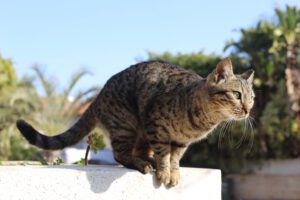
Ear Position
A cat’s ears can also reveal their mood. Forward-facing ears indicate interest or curiosity, while flattened ears can be a sign of fear, aggression, or submission.
Vocalizations
Cats communicate using various vocalizations, such as meows, purrs, hisses, and growls. Each sound can convey different emotions or needs, so it’s essential to familiarize yourself with your cat’s unique vocalizations.
There Are Many Reasons For a Cat’s Butt Wiggle
The cat butt wiggle is an endearing and essential aspect of feline behavior that is deeply rooted in their natural hunting instincts. Understanding the purpose of this behavior can help cat owners provide a more stimulating and fulfilling environment for their feline friends. By offering a variety of toys, engaging in regular interactive playtime, and learning to read your cat’s body language, you can support your cat’s instinctual needs and promote a happy, healthy, and well-adjusted companion.
For cat parents in the Plymouth Meeting, PA area, The Village Vets are available to serve you and your cat. Call us today at (484) 820-1700 or make an appointment.
Recent Posts
About Veterinary Village
Veterinary Village offers excellent service to clients in a comfortable, friendly atmosphere. To learn more about us and how we can better serve you and your pet here in Plymouth Meeting, PA, click the button below.
Share This Post
Recent Posts
About Veterinary Village
Veterinary Village is a network of three animal hospitals based in Atlanta, GA and the surrounding area. We offer honest, excellent service to our clients in a comfortable, friendly atmosphere. To learn more about our locations and how we can better serve you and your pet, click the button below.

